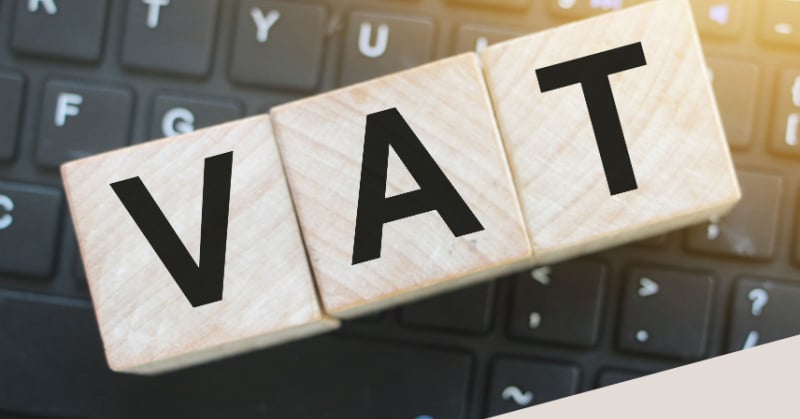In an increasingly global economy, businesses are faced with the challenges presented by international tax compliance. For U.S.-based businesses, used to sales tax, this means coming to grips with the complex world of Value Added Tax (VAT).
What is VAT and how does it differ from sales tax?
VAT is a consumption tax levied on imports and sales of goods and services by most countries around the world. Unlike sales tax, VAT is levied on all stages of the production process, meaning that there are no resale exemptions. To prevent items from being taxed multiple times, business purchasers are instead allowed to take “input credits” equal to the VAT they paid on their purchases, so long as those purchases are used for making taxable supplies. For U.S. businesses that open overseas branches, understanding when and how to claim such credits is critical to prevent unnecessary revenue losses.
Cross-border service providers
When selling services to non-U.S. customers, businesses must know how VAT countries source services. Traditionally, countries have sourced sales of services to businesses (B2B sales) to the customers’ location, and sales to non-business consumers (B2C sales) to the suppliers’ location. Over the last 15 years, however, there has been a consistent shift to sourcing B2C sales to the customers’ location as well. In determining a customer’s location, countries either look to the customer’s residence/business establishment or to the location of use by the customer. Service providers should make sure to record information such as their customers’ IP address, billing address, or tax registration, as countries frequently require this information as evidence of customer location.
When determining whether your cross-border sales of services require you to charge VAT, it’s important to keep the following in mind:
- What type of service are you providing?
Many countries, including those in the European Union, only require the collection of VAT in the customer’s country when selling “electronic services.” Other countries, such as Australia, instead require the collection of VAT on all types of “remote” services.
- Are you making B2B sales or B2C sales?
Many jurisdictions will require collection of VAT by non-residents on B2C services but not B2B services. For countries that differentiate B2B and B2C sales, it is critical to collect your business customers’ VAT registration numbers as evidence of a B2B sale.
- Is a special registration available?
To simplify VAT compliance, many countries offer special registration programs for non-resident providers. A major advantage of such programs is that registrants are typically able to file simplified VAT returns and are often exempted from many invoicing requirements. A potential drawback, however, is that such registrants are frequently not allowed to claim input credits for any purchases they made subject to VAT.
A notable special registration program is the EU’s One Stop Shop (OSS). Using OSS, businesses can register for VAT in a single EU country and then report the tax on their sales of services throughout the EU on a single OSS VAT return. While sellers are still required to charge VAT at the rates set by each country, the OSS scheme allows sellers to avoid having to separately register for VAT and file returns in each of the 27 EU countries.
International sales of goods
When there is a cross-border sale of goods, VAT usually applies to two separate taxable events: the “supply” and the “import.” “Import VAT” is typically paid by the “importer of record” instead of the seller. The “supply” is usually treated as a zero-rated export in the origin country. When the seller also acts as the importer, however, many countries will then deem that a second domestic “supply of goods” has occurred and require that the seller charge VAT. As a result, under the traditional model, non-resident sellers of goods are typically able to avoid charging VAT so long as they are not acting as the importer.
Frequently, sellers require middlemen (freight companies) or their customers to act as importers on their B2C sales. As many countries had import VAT exemptions for low-value goods, most customers were fine with this arrangement as they only ended up paying import VAT on their larger purchases. With the growth of online commerce, however, many governments have grown disenchanted with this system as it has led to diminished tax revenues and has disadvantaged local businesses. To address this, countries have increasingly adopted a new model for cross-border sales whereby they:
- Eliminate the import VAT exemption for low-value goods.
- Shift the place of supply of goods to the destination country, resulting in overseas sellers being required to charge domestic VAT on such sales, regardless of whether they are the actual importer.
- Exempt from import VAT any goods on which the domestic VAT was charged.
When making sales of goods to customers in countries that have implemented this new model, businesses should consider the following:
- Do the new rules apply to both B2C and B2B sales?
Like the rules for overseas providers of services, these new rules are frequently limited to B2C sales. As a result, the collection of business customers’ VAT numbers is increasingly important to businesses selling goods globally.
- Are the new rules limited to low value goods?
Many countries have limited the application of these new rules to goods of under a certain value. The particulars of these thresholds (e.g., is it assessed per item or per shipment? Is the threshold based on price or tax owed?) can vary, so these rules must be evaluated on a country-by-country basis.
- Do special registrations exist?
Just as in the case of non-resident sellers of services, many countries apply simplified registrations to overseas vendors of goods. In the EU, overseas sellers of goods can utilize the IOSS (Import One Stop Shop) for their B2C sales of low value goods into any EU member state.
Sales to Canada
Canada is a natural country for U.S. businesses to begin their non-U.S. expansion. At the national level, Canada imposes a 5% Goods and Services Tax (GST). This tax operates as a VAT-style tax and is levied on supplies and imports of goods and services. A simplified registration system is available for non-Canadian providers of digital services. Five provinces (Ontario, New Brunswick, Newfoundland and Labrador, Nova Scotia, and Prince Edward Island) impose a single Harmonized Sales Tax (HST), which mirrors the GST and combines the federal and provincial taxes into a single tax rate. The HST is administered by and remitted to the federal Canada Revenue Agency. Businesses that are registered for GST are automatically considered registered for HST in any of the five provinces.
Outside the HST provinces, local tax becomes more complicated. The province of Quebec imposes its own VAT-style tax, confusingly called the Quebec Sales Tax (QST). With a few minor exceptions, the QST mirrors the GST. However, unlike the HST, it is a separate tax from the federal GST. Revenu Québec administers both QST and the federal GST in the province. Quebec also offers its own simplified registration system for non-Quebecois service providers selling to Quebec consumers.
Three provinces (British Columbia, Manitoba, and Saskatchewan) operate their own provincial sales taxes (PST). Unlike the HST or QST, these taxes operate like U.S.-style sales taxes imposed on final consumers, meaning that sales for resale are exempt from tax and there are no input credits available. PST and GST registrations are separate and whether a sale is subject to GST has no impact on whether it might be subject to PST. Finally, Alberta and the three territories have no local consumption taxes.
Other considerations
- Registration thresholds
Most countries have minimum thresholds at which businesses are required to register for VAT. U.S. businesses, however, should keep in mind that such minimums often do not apply to cross-border service regimes and as a result, even a limited number of sales into a country can expose companies to VAT liability.
- Marketplace sales
Many jurisdictions have rules that require online marketplaces to collect VAT on sales that they facilitate on behalf of the underlying seller. Businesses should make sure to differentiate their direct and marketplace sales and should consider such rules when deciding whether to offer direct sales in specific countries.
- Invoicing and reporting
VAT countries are also imposing evermore complex and burdensome VAT invoicing and reporting requirements, such as requiring the filing of sales and purchase ledgers alongside periodic VAT returns. Even more cumbersome is the trend towards requiring real-time, or near real-time, reporting. Such requirements have been prevalent in Latin America for years but are increasingly common outside the region as countries as diverse as Hungary and India have implemented their own requirements. U.S. companies opening overseas business must learn to deal with these rules as failure to comply with them can result in substantial fines. The good news for U.S. businesses is that many of these ever-increasing reporting and invoicing obligations don’t apply when a seller is registered under simplified registration regimes for non-residents.
- Withholding
Businesses making sales to countries outside Canada and Europe may also have to contend with “VAT withholding.” Withholding refers to a practice where a purchaser must remit VAT to the government in place of the seller and is most commonly applied in cases where the seller is a non-resident. Businesses should be aware of withholding regimes when setting prices, as the withheld tax is usually taken out of the buyer’s payment to the seller.
In the age of e-commerce, it’s increasingly easy for U.S. businesses to sell to consumers around the world. As they do, it’s important that decision-makers are aware of the VAT consequences of such overseas expansion.
.png?width=150&height=63&name=TWRlogo-regmark_blueblack%20(1).png)
.png)










Do you have questions about this article? Email us and let us know > info@woodard.com
Comments: